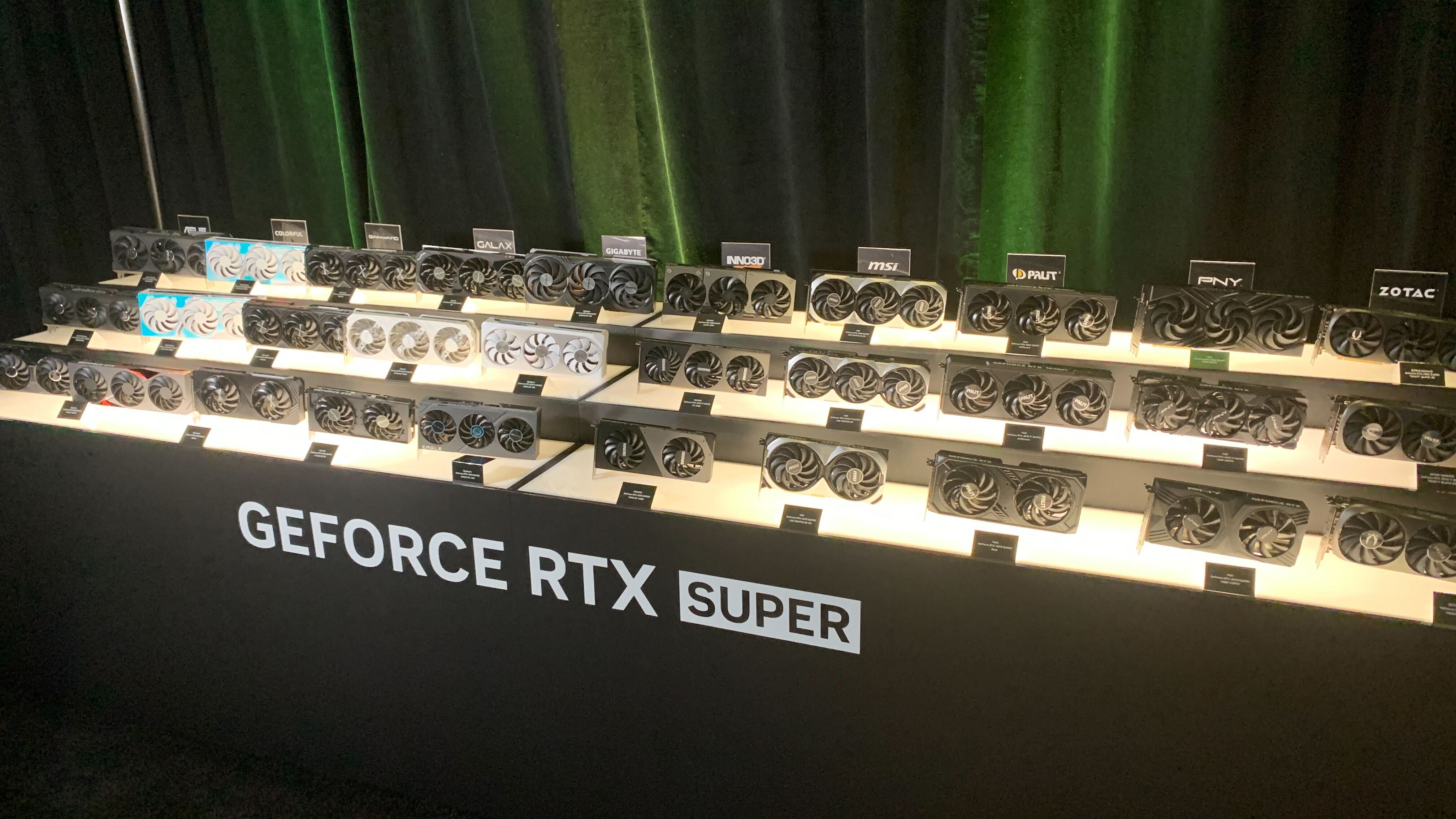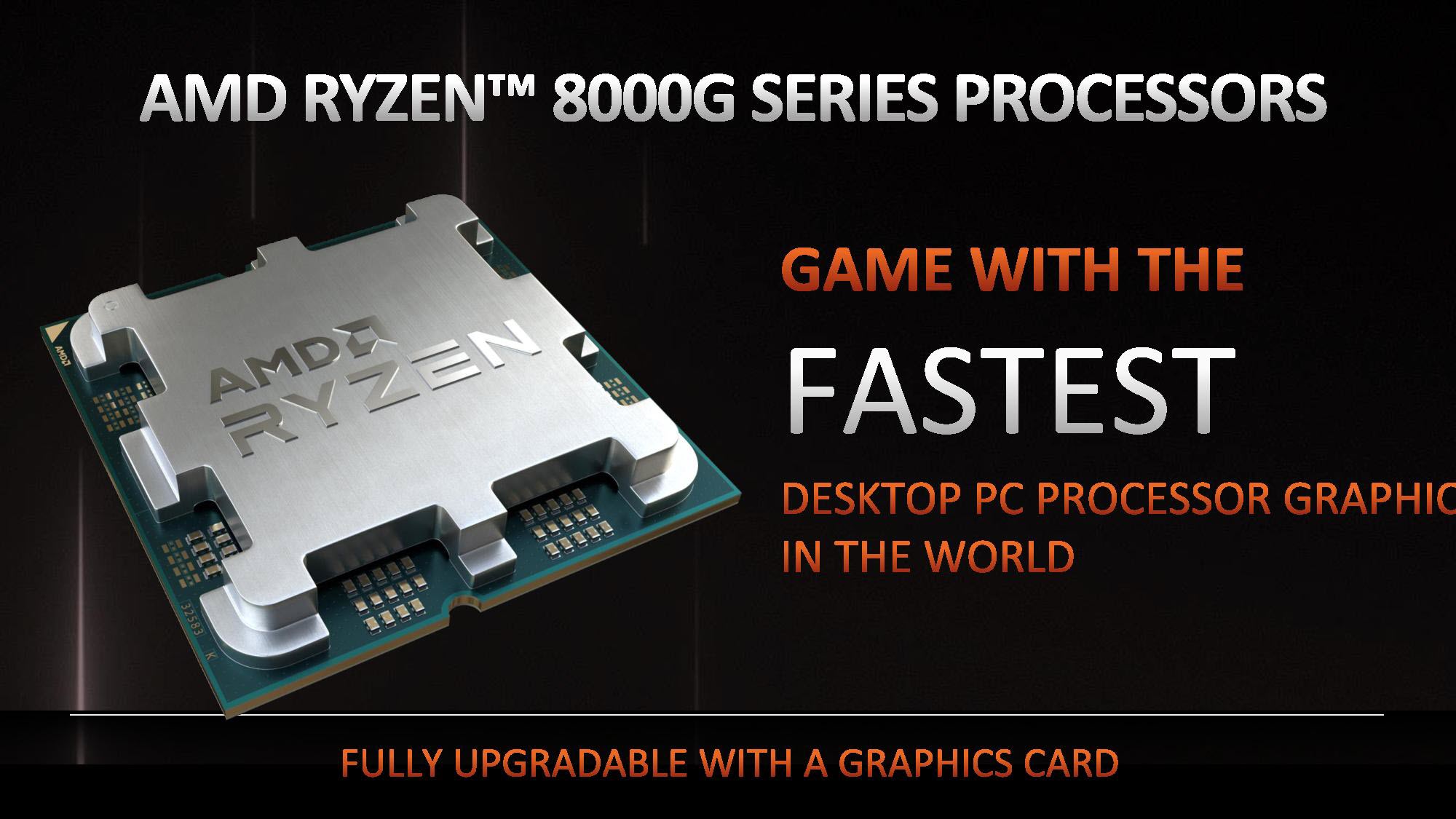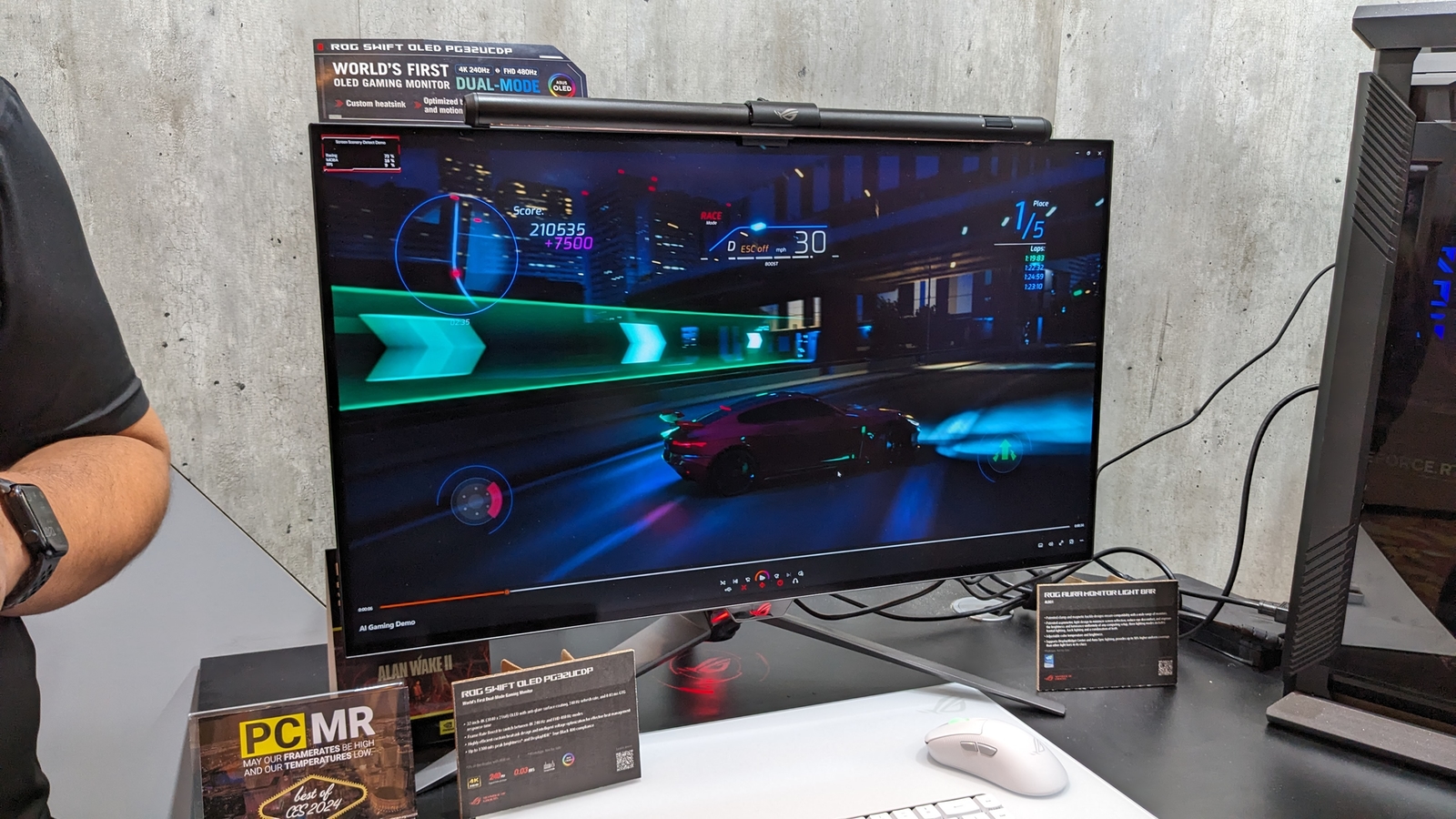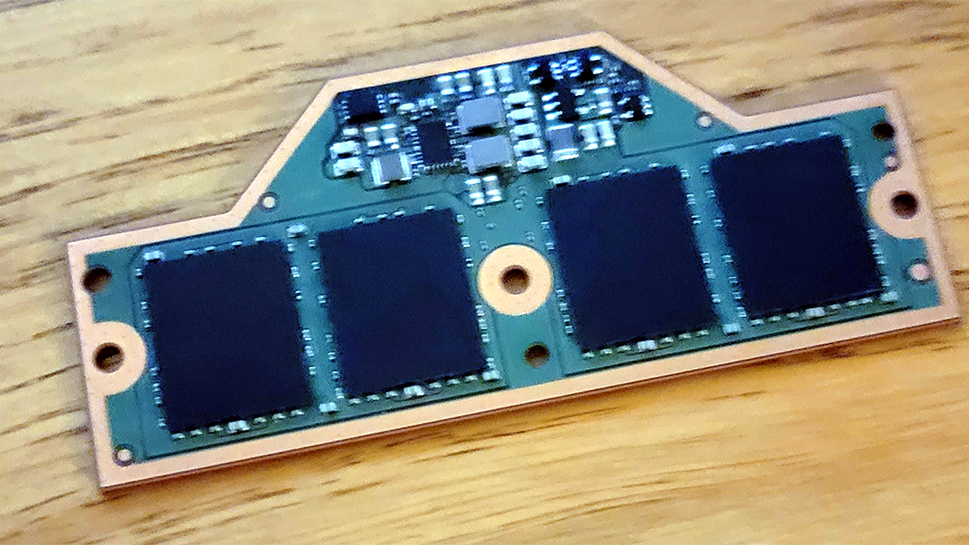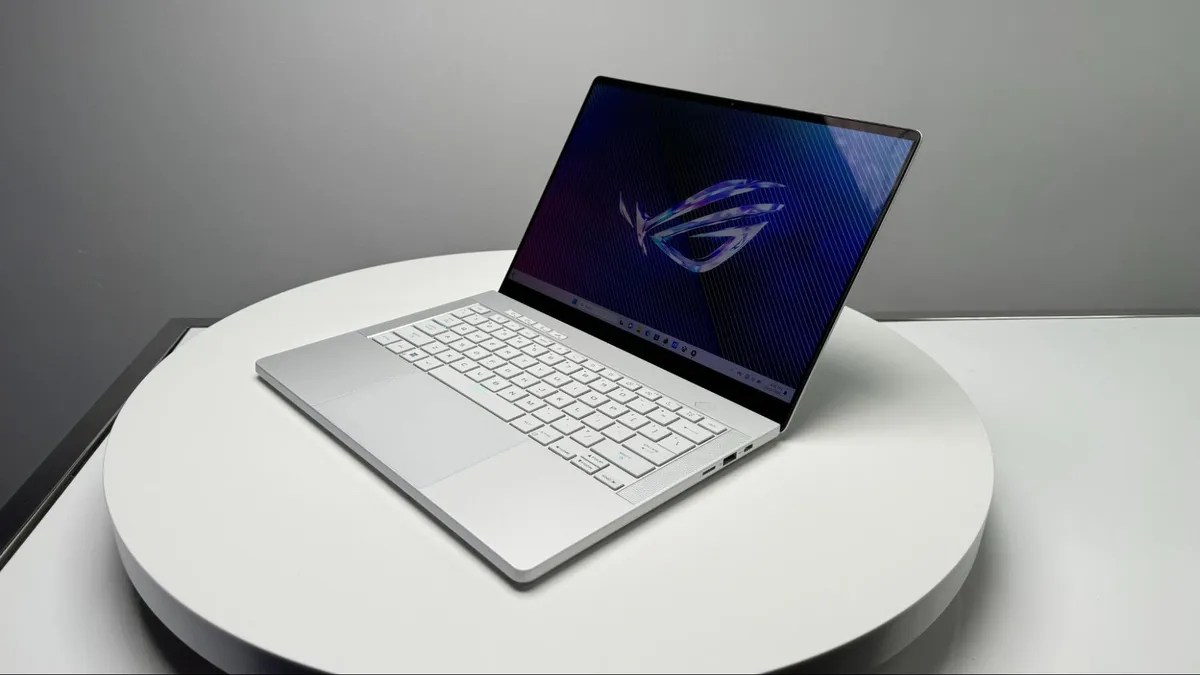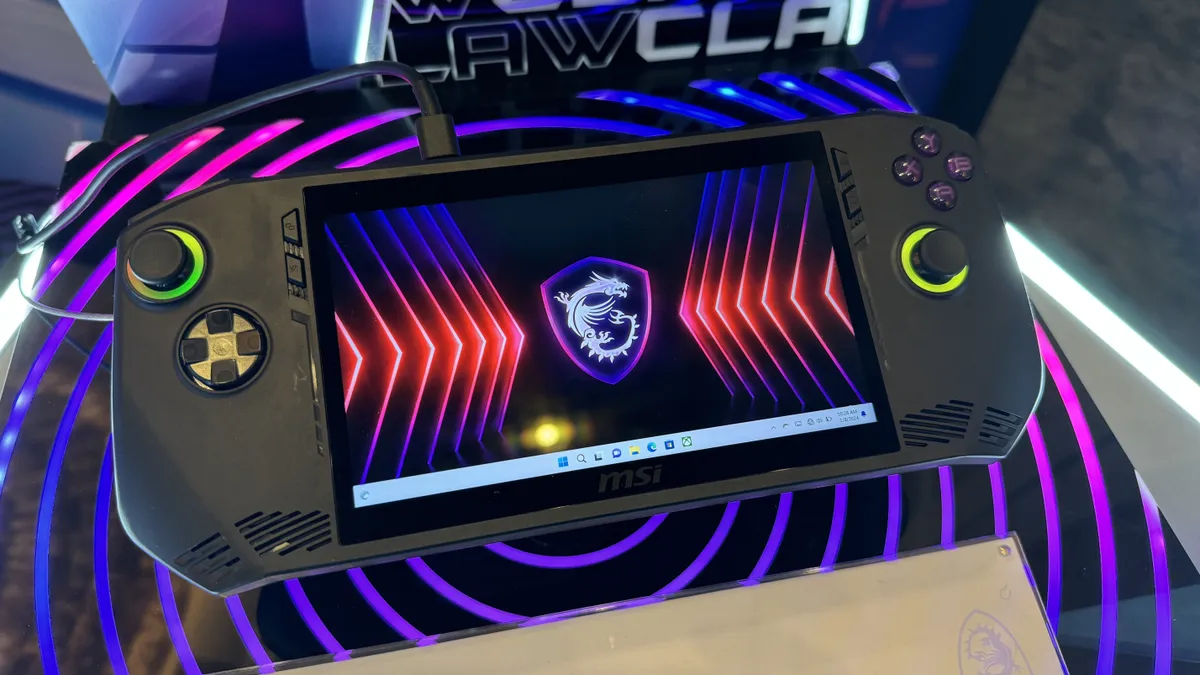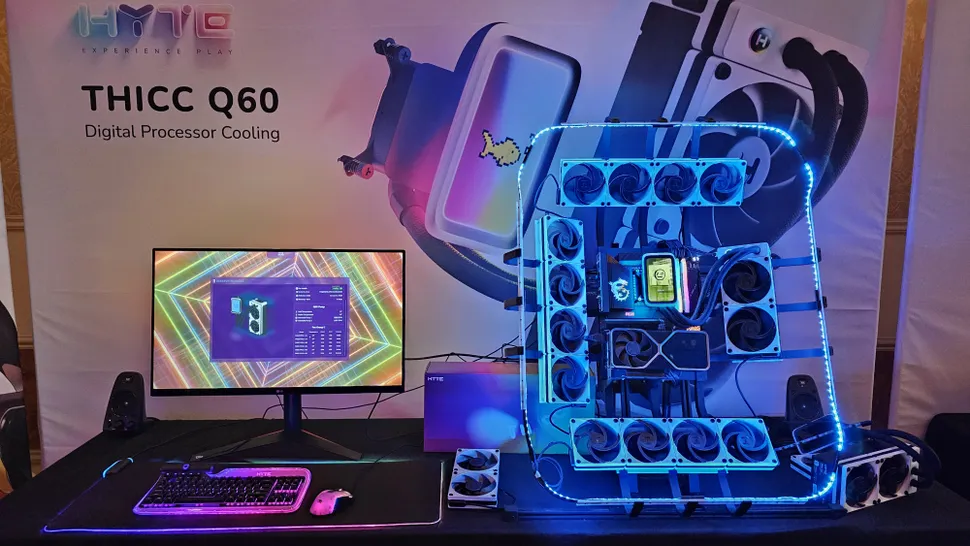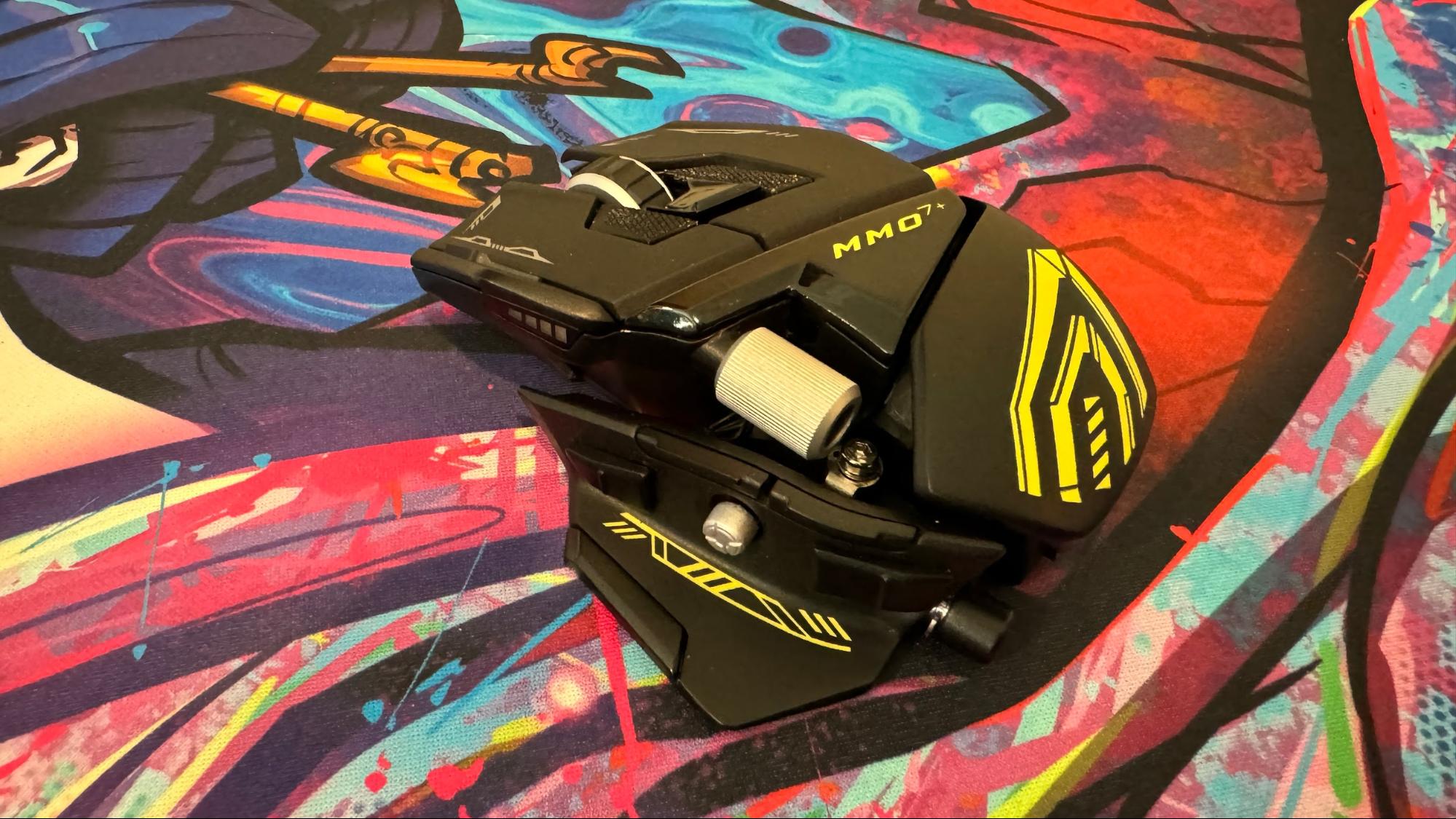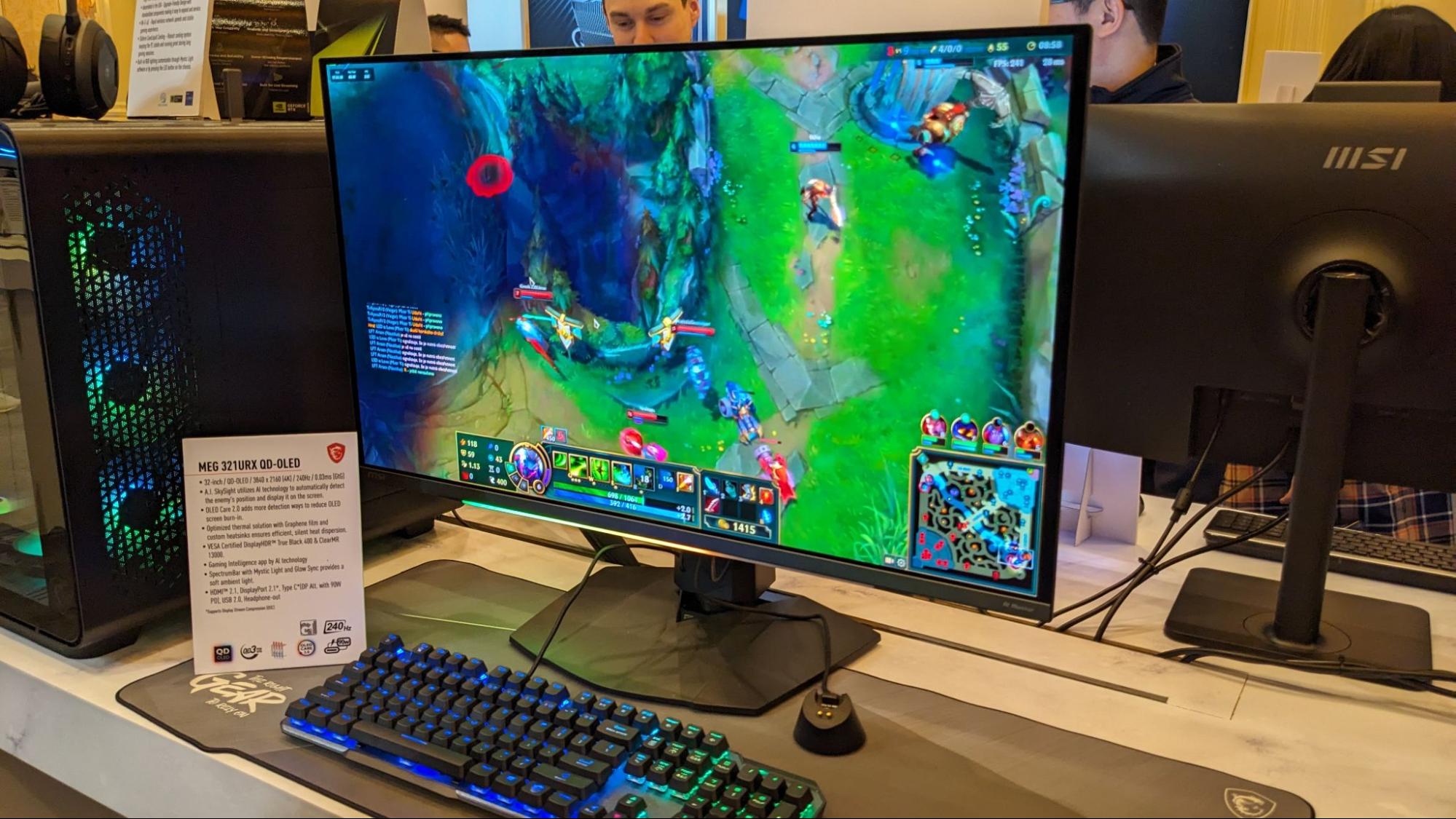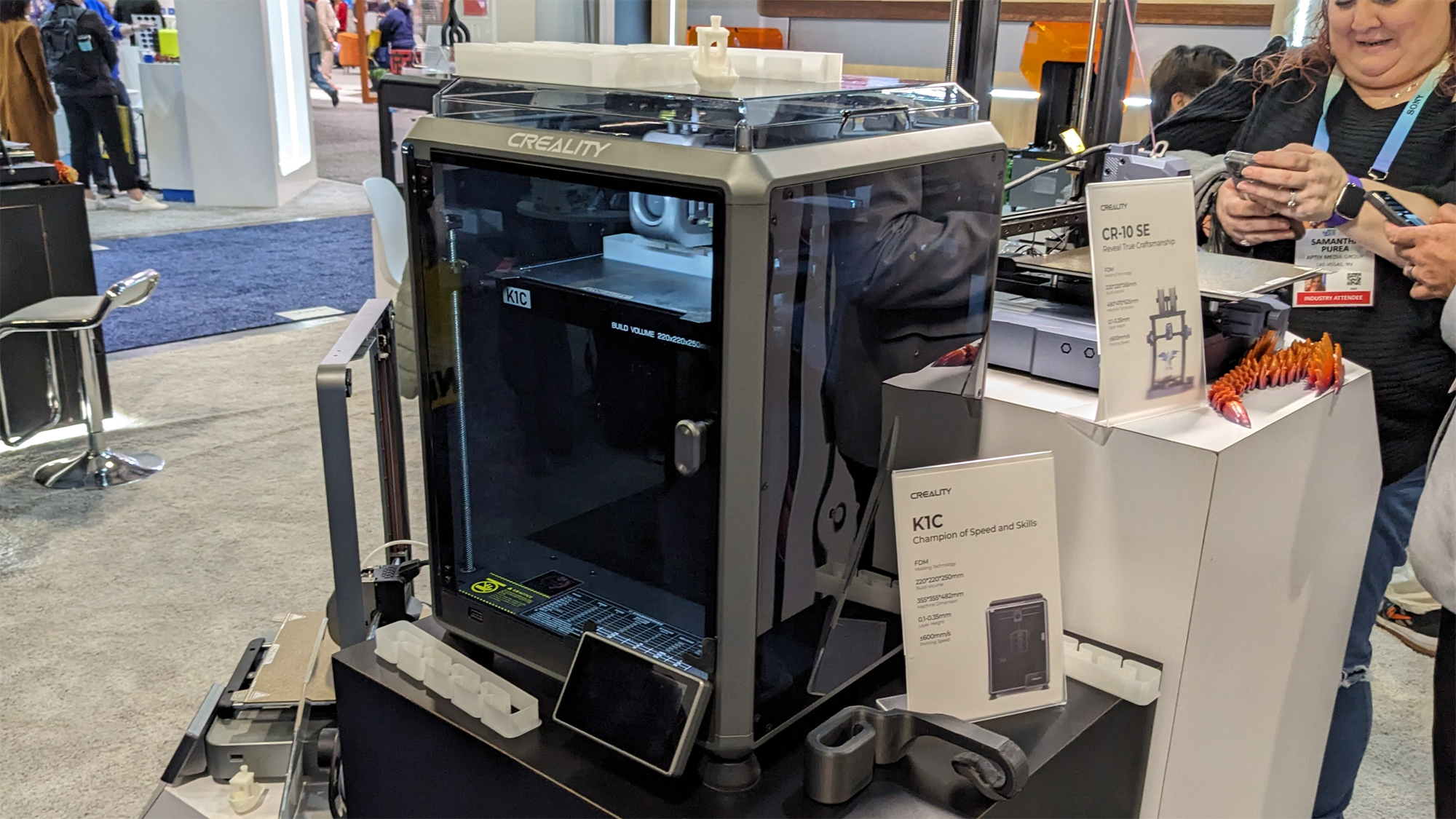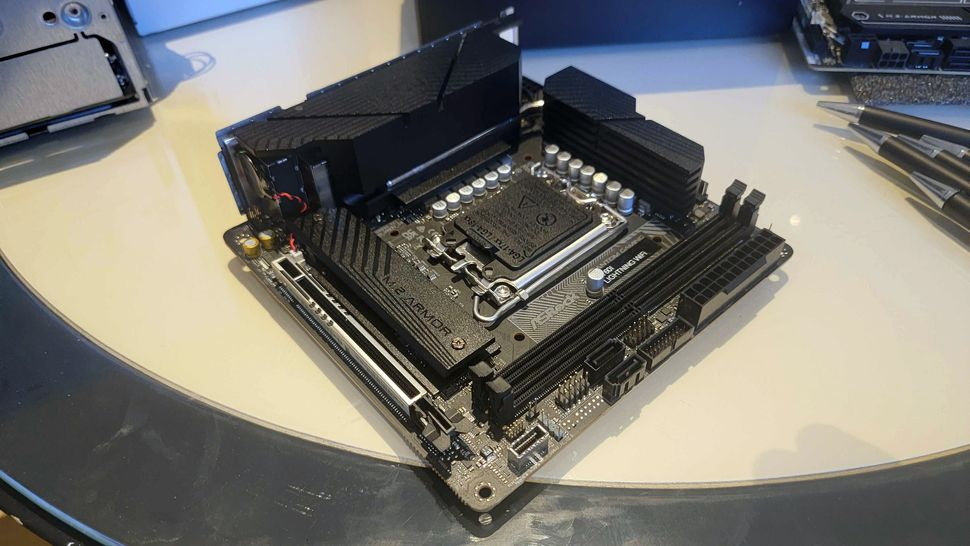Best of CES 2024: Evolution and Revolution
Though AI was a popular buzzword, faster and better designed products dominated
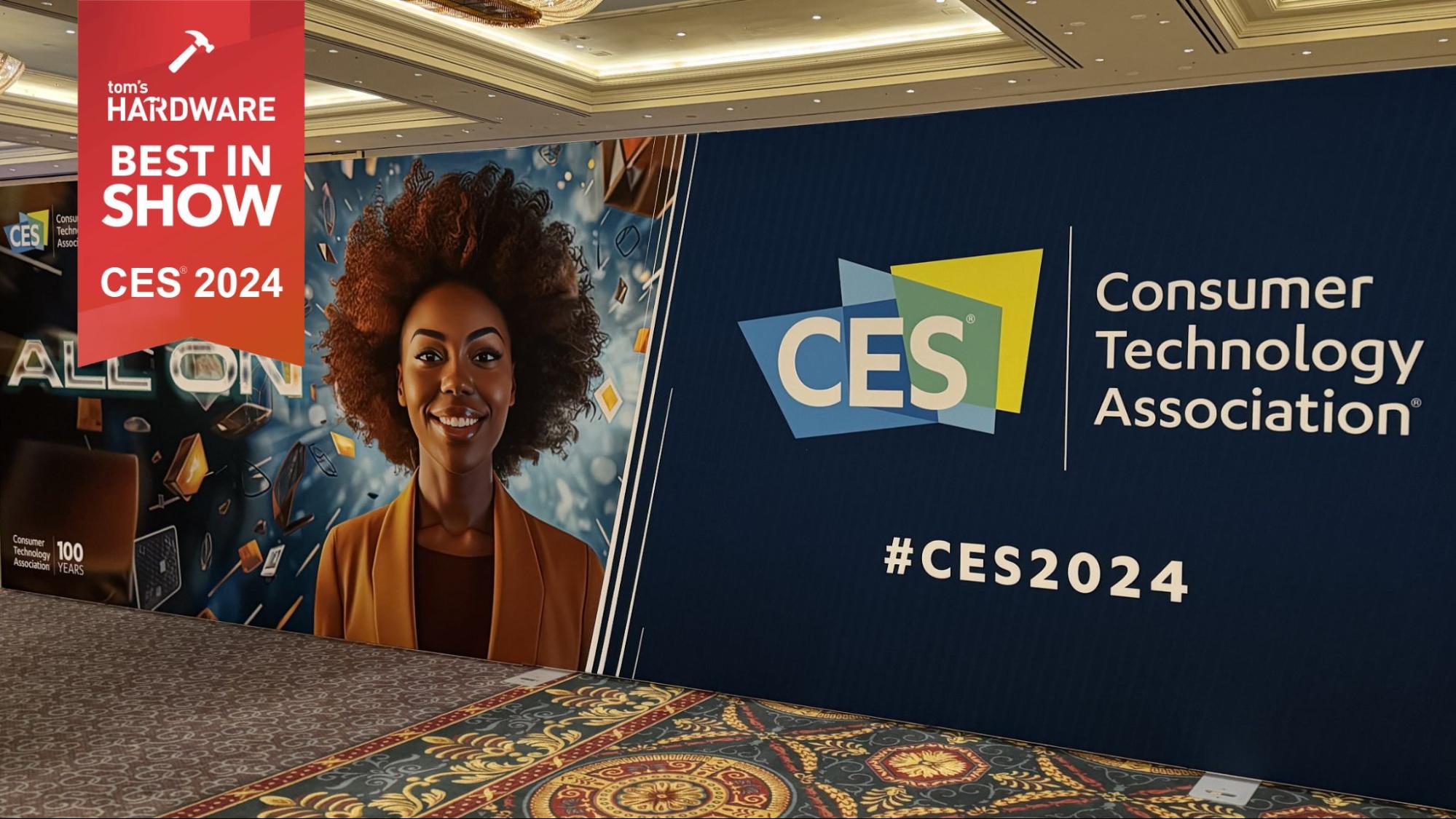
CES, the world’s leading trade show, is back! Yes, there were in-person versions of the show in 2022 and 2023, but this year is the first since 2020 that felt “normal.” The halls were crowded full of eager attendees, the show floors were packed with booths and most of the companies we usually visit with at CES had a presence.
Going into the show, we expected to hear the word “AI” every five seconds that we talked with vendors, but in the enthusiast tech world, we heard it a bit less often than our colleagues who cover TVs, appliances and phones at other websites. Instead, it seems that nothing beats good design, more processing power and a positive user experience.
Intel and the laptop vendors which use its CPUs showed off various local AI workloads, which mostly involved generating images or managing power profiles And AI underpins Nvidia’s gaming technologies. But there are only so many times we can prompt Stable Diffusion’s GIMP plugin to draw a cat driving a car, before we get bored. MSI is the one company that wowed us with a true AI innovation: a monitor that uses computer vision to analyze your game’s map and point out where enemies are coming from.
Insead, we were excited to see a number of products that really moved the ball forward in ways that were more evolutionary than revolutionary: new graphics cards and CPUs that add more performance for the money, a high-end 3D printer that zooms along at 600 mm/s and works with carbon fiber or a gorgeous OLED monitor that can run at up to 480 Hz at 1080p or 240 Hz at 4K.
These are the 15 best products of CES 2024.
Best Graphics Card: Nvidia RTX 4070 Super
Nvidia announced three new RTX 40-series Super model graphics cards, and AMD revealed its RX 7600 XT 16GB. While all four will vie for a spot on our list of the best graphics cards for gaming (and other uses), the one we're most excited about is… well, honestly it's a bit hard to nail things down. Nvidia provides more performance for a lower price than its existing non-Super cards, so things definitely moved in the right direction. AMD provides double the VRAM and slightly higher performance with its new GPU, at a higher price than the RX 7600. But none of the new models are all that surprising — we've been hearing rumors about both companies' new GPUs for several months at least. Still, if we have to just pick one for an award, it's the new RTX 4070 Super.
Fundamentally, you're getting about 93% of the RTX 4070 Ti, for 75% of the price. Alternatively, you're getting 22% more GPU than the RTX 4070 for the same price. More importantly, you're at least getting 12GB of high-speed GDDR6X memory, along with access to Nvidia's RTX technologies: DLSS, superior ray tracing, and AI tensor cores. Given the RTX 4070 already trades blows with the RX 7800 XT — slightly slower rasterization performance, much faster ray tracing and AI performance, and the RTX 4070 Ti does the same with the RX 7900 XT — Nvidia now effectively delivers a higher performance option at the same price.
The RTX 4070 Super launches next week, so check back then for our full review and benchmarks.
Read more: Nvidia RTX 40-series Super models revealed
Get Tom's Hardware's best news and in-depth reviews, straight to your inbox.
—Jarred Walton
Best CPU: Ryzen 7 8700G and Ryzen 5 8600G
AMD rolled out its Ryzen 8000G ‘Phoenix’ lineup of APUs at CES 2024, beating Intel to the punch as the first company to bring purpose-built AI accelerators to the desktop PC — its second such feat after it was the first to bring AI to laptops with the same XDNA-powered neural processing unit (NPU). The chips also boast a powerful integrated RDNA 3 graphics engine that AMD claims delivers 1080p-capable gaming performance, even in some AAA titles, albeit at the reduced fidelity settings we’d expect from this class of chip.
As we’ve seen in the past, AMD builds its APUs for the desktop using the same silicon as its laptop chips. In this case, AMD leverages the Phoenix architecture that employs the Zen 4 CPU architecture and RDNA 3 graphics engine. However, the lack of battery life concerns in desktop PCs allows the chip to run at higher power limits, thus unleashing the full power of the silicon. AMD’s two flagship models, the Ryzen 7 8700G and the Ryzen 5 8600G, boast eight and six cores, respectively. AMD also brought its new APU lineup up to modern standards with support for AM5’s DDR5 and PCIe 4.0 connectivity, crafting what should be exceptionally powerful processors given their accessible price point.
AMD’s APUs have historically dominated the entry-level gaming market because Intel doesn’t have processors with powerful enough integrated graphics to provide meaningful gaming performance, even for the lowest-end gaming systems. AMD’s previous-gen Ryzen 5 5600G has long been one of the Best CPUs for gaming due to its surprisingly strong graphics performance, and we expect the new models to assume that mantle once again.
The chips feature FSR, HYPR-RX, and Fluid Motion Frames support, competitive pricing, and bundled coolers for all three SKUs. The new Ryzen APU models are poised to dominate the entry-level gaming segment once again when they arrive on January 31, winning our pick for the best CPU of CES 2024.
Read more: AMD launches Ryzen 8000G ‘Phoenix’ APUs, brings AI to the desktop PC
—Paul Alcorn
Best Gaming Monitor: Asus ROG Swift OLED PG32UCDP
When it comes to the best gaming monitors, you often must make some hard choices regarding performance and maximum image quality. You can go with an IPS panel and get ultra-fast 500 Hz refresh rates but compromise on contrast and color. Or you can opt for an OLED panel, which offers vibrant colors and inky blacks but falls short of class-leading refresh rate performance.
Fortunately, Asus is coming to the rescue with its ROG Swift OLED PG32UCDP gaming monitor, hoping to give gamers the best of both worlds. In its standard operating mode, the PG32UCDP seems like any other modern high-end 32-inch gaming monitor with a brilliant OLED panel, a 4K (3840 x 2160) resolution, a fast 240Hz refresh rate, and a peak brightness of 1,300 nits. There’s enough resolution for productivity tasks when not gaming and plenty of performance overhead for 4K gaming with the best graphics cards.
However, the real spicy action happens when you switch to Frame Rate Boost mode. Gamers can quickly toggle this setting on the monitor, which drops the resolution down to Full HD (1920 x 1080) resolution and boosts the maximum refresh rate to 480 Hz. That next-level speed and performance put it on even footing with the Alienware AW2524H and AW2524HF, which have a native refresh rate of 480 Hz at Full HD resolution. However, those fraternal Alienware twins can hit 500Hz with an overlock setting in the OSD.
Still, the ability for gamers to pick and choose when they want maximum resolution or maximum performance, all while maintaining the image quality advantages of OLED, must be commended. Asus also gets the basics right, with HDMI 2.1 and DisplayPort 1.4 connectivity, 90-watt USB-C Power Delivery, and an integrated KVM switch.
We’ll be curious to see how the Asus ROG Swift OLED PG32UCDP performs once we get it in the lab.
Read more: Asus announces two new OLED gaming monitors delivering 480 Hz at up to 1440p resolution
—Brandon Hill
Best Memory: Micron LPCAMM2
Micron unveiled its new LPCAMM2 memory modules at CES 2024. Despite earlier announcements from competing companies, Micron will be the first to actually bring memory modules based on the new standard to market. Perhaps more important for those looking for the ultimate in performance, these new modules unlock speeds of 9,600 MT/s via LPDDR5X memory, a massive increase over the standard SODIMM peak of DDR5-6400. However, that’s just one of the many advantages of this new memory form factor that will become common in performance-oriented laptops over the coming years.
The LPCAMM2 standard also promises to bring fast and power-efficient LPDDR5X memory to laptops in a removable form factor for the first time, meaning the memory chips are no longer required to be soldered directly to the motherboard. These new modules will replace the standard SODIMMs that dominate current laptops, but the innovative design consumes 80% less power and 64% less space inside the chassis, thus enabling longer battery life and even slimmer laptop designs. LPCAMM2 also provides a dual-channel memory interface from a single module, a first. The modules will come in 16, 32, and 64GB capacities at first, with room to grow up to 128GB of capacity in a single module in the future.
The power and space savings, not to mention the speed improvements, of Micron’s LPCAMM2 are set to redefine our expectations for laptop memory, earning our award for the best memory of CES 2024.
Read more: Micron displays next-gen LPCAMM2 modules for laptops at CES 2024
—Paul Alcorn
Best Gaming Laptop: Asus ROG Zephyrus G14/G16
Asus took classic, beloved laptops known for performance, portability, and even battery life, and made them sleeker than ever. The new Asus ROG Zephyrus G14 and G16 are slimmer and have newer, more adult designs than before, and, well, it looks great. There's only so much you can do without a new GPU to push forward graphics, so Asus dug into the design.
For the G14, that does mean topping out at an Nvidia GeForce RTX 4070 and AMD Ryzen 9 8945HS, while the G16 uses up to an Intel Core Ultra 9 185H and RTX 4090. Both have silver and black options with a stripe on the lid, rather than a garish massive ROG logo or AniMe Matrix. I'm not going to say it looks like it could double as a business laptop, but it's far more attractive.
They're also getting, on paper, really nice screens, with Asus' OLED Nebula displays. The 14-incher gets a 2880 x 1800 screen at 120 Hz, while the bigger 16-inch laptop goes to 2560 x 1600 at 240 Hz. In a brief trial, both looked great, and we're excited to see just how well they perform in real testing.
Read more: Asus ROG Zephyrus gets a sleek, slim new look with AMD Hawk Point and Intel Core Ultra
—Andrew E. Freedman
Best Laptop: Asus Zenbook Duo
This was a contentious category among the Tom's Hardware judges, with some favoring the HP Spectre x360 2-in-1's even approach to a refresh without reinventing the wheel, while others like the very-CES approach of the Lenovo ThinkBook Gen 5 Hybrid and its ability to run both Windows and Android with a tablet and base station. But the Asus Zenbook Duo kept coming up as an option that seemed like a refined idea at a price point that's not crazy.
The Zenbook Duo has a pair of 14-inch OLED displays and a detachable Bluetooth keyboard. It's an idea we first saw hit production in Lenovo's Yoga Book 9i, but that one had a U-series CPU and an origami kickstand that wasn't intuitive. Asus' Zenbook Duo's kickstand is permanently attached to the laptop, and it goes up to an Intel Core Ultra 9 185H. So it should be easier to use and more powerful. The Asus model has far more ports than the Yoga, including HDMI alongside two Thunderbolt 4 ports.
While we don't have a final price for it, it's been suggested to us that it will hover around $1,500. If that sticks, it won't be a ridiculous price, considering the Yoga was almost $2,000 when we reviewed it.
I did have a bit of trouble getting the early unit at Asus' briefing to stand up straight with the monitors side to side, but otherwise it seemed like a solid machine, and we're eager to see what it can do.
Read more: Asus Zenbook Duo is a dual-screen foldable with two 14-inch OLED screens and Intel Core Ultra
—Andrew E. Freedman
Best Gaming Handheld: MSI Claw
One way to make a splash at CES is to be the first to do something. And while the MSI Claw isn't the first modern handheld gaming PC, it is the first mainstream PC brand to use Intel Core Ultra processors (or Intel at all. Lenovo, Asus, and Valve all opted for AMD chips). It's also packing a bigger battery than other handhelds, even if MSI isn't exactly claiming record-breaking battery life.
MSi is claiming that it's producing a more ergonomic device, and while the plastic did divide some of our editors on the show floor, we're looking forward to trying it in long-term use. The screen seems similar to the one on the Asus ROG Ally, but considering that was a pretty decent screen, it's hard to argue with.
Intel improving in graphics means we get more competition in handheld gaming outside of the Kickstarter space. We're looking forward to seeing how Intel and MSI put their own mark on it with MSI Center M, XeSS, and other technologies.
Read more: MSI Claw is the first gaming handheld to run on an Intel Core Ultra processor with Arc Graphics
—Andrew E. Freedman
Best Cooling / DIY: Hyte Nexus Link
It’s not easy to get excited about an ecosystem at a show like CES, but Hyte’s Nexus Link was a standout for me.This cable-decluttering and system-building simplification platform is clearly a competitor to Corsair's iCue Link, with similar daisy-chained magnetic connectors and fans. But Hyte also offers magnetic RGB strips that use the same connector, and the products have a quirky but much more interesting design.
Nexus Link is powered by a quad-core Arm CPU housed in the screen built into the company’s Thicc Q60 AIO cooler, which we first saw at Computex last year. It sports a thick 240mm radiator and chunky fans that the company claims will outperform any 360mm radiator currently on the market. So the importance of performance isn’t getting left behind in the quest for clean design.
In my brief hands-on time with it, the whole Nexus Link ecosystem, from the hardware to the software, felt more refined, definitely more visually interesting, and arguably better built than what Corsair has done with iCue Link. That's a little shocking from a company so comparatively new and unknown.
I will wait for the chance to build a Nexus Link system and spend some time with the software before I can say for sure how it compares to the competition from Corsair and Lian Li, and others. But on first impression, Hyte looks to be on the verge of pulling off a major upset in the DIY PC space.
Read more: Hyte's Nexus Link ecosystem of RGB devices makes building rainbow PCs seem easier than ever
—Matt Safford
Best PC Case: MSI MEG Maestro 700L PZ
We saw quite a few PC cases designed to support motherboards with rear-facing connectors here at CES 2024, and MSI’s Project Zero boards are some of the first to market using Maingear’s patent. But most are fairly compact, and don’t support full-size ATX options. MSI’s large MEG Maestro 700L PZ, though, supports up to E-ATX boards — like most of these cases, it will work with traditional motherboards as well). But the 700L PZ takes the en vogue “fishbowl” case style to the next level, with the entire front and side panel made up of one massive curved piece of tempered glass.
The rest of the case is crafted from large panels of 2.5 mm-thick aluminum, and the dual-panel design hides the PSU behind the motherboard, along with all the wires and connectors. Don’t worry about airflow, because fans or large radiators can be mounted in front of the motherboard, as well as on the top or bottom of the case.
As you might expect, this will be an expensive case, with an MSI rep telling us that it will cost around $400 when it arrives sometime in the next month or so. It’s far from cheap, but if you crave that clean interior look with acres of glass to show off your GPU and other components, MSI’s MEG Maestro 700L PZ is arguably the prettiest of these kinds of cases we’ve seen yet. But at the same time, just looking at that large bent piece of glass makes us more than a little nervous.
—Matt Safford
Best Mouse: Mad Catz MMO 7+
It's been a while since we've seen Mad Catz — the company filed for bankruptcy in 2017 and then quietly revived under new ownership in 2018, but it hasn't exactly been making waves. But the brand is back at CES this year with a slew of gaming peripherals, including a new wireless version of an old classic: the MMO 7.
The new MMO 7+ is a wireless version of Mad Catz' classic MMO-focused multi-button mouse, with some improvements that bring it into 2024. It features a whopping 21 programmable buttons with a shift mode and five profiles for up to 210 inputs (okay, that's a little ambitious — but still, 21 buttons is pretty impressive). What's nice is that those 21 buttons are not just laid out in a 12-button side panel like most MMO mice have (see: Razer's Naga V2 Pro, Corsair's Scimitar Elite Wireless, etc), but are kind of... all over the mouse, which makes them easier to differentiate. Like the old MMO 7, it's modular and will come packaged with interchangeable palm rests and pinky rests, as well as a tool that will let you change the palm and thumb rest positions.
Aside from wireless connectivity (2.4GHz and Bluetooth) and a USB-C charging port, the MMO 7+ also features a Pixart PAW-3395 optical sensor, which has a maximum sensitivity of 26,000DPI, a maximum speed of 650 IPS, and up to 50 G's of acceleration, as well as customizable RGB lighting and a horizontal scroll wheel. The only real disappointment is battery life, which is currently rated at 40 hours — most gaming mice these days are hitting 75–120 hours, so that's a pretty big difference. Still, it's nice to see a mouse that's not just a stripped-down, ultra-lightweight, FPS-oriented pointer with the promise of unnecessarily high polling rates.
—Sarah Jacobsson Purewal
Best Keyboard: Cooler Master MK770
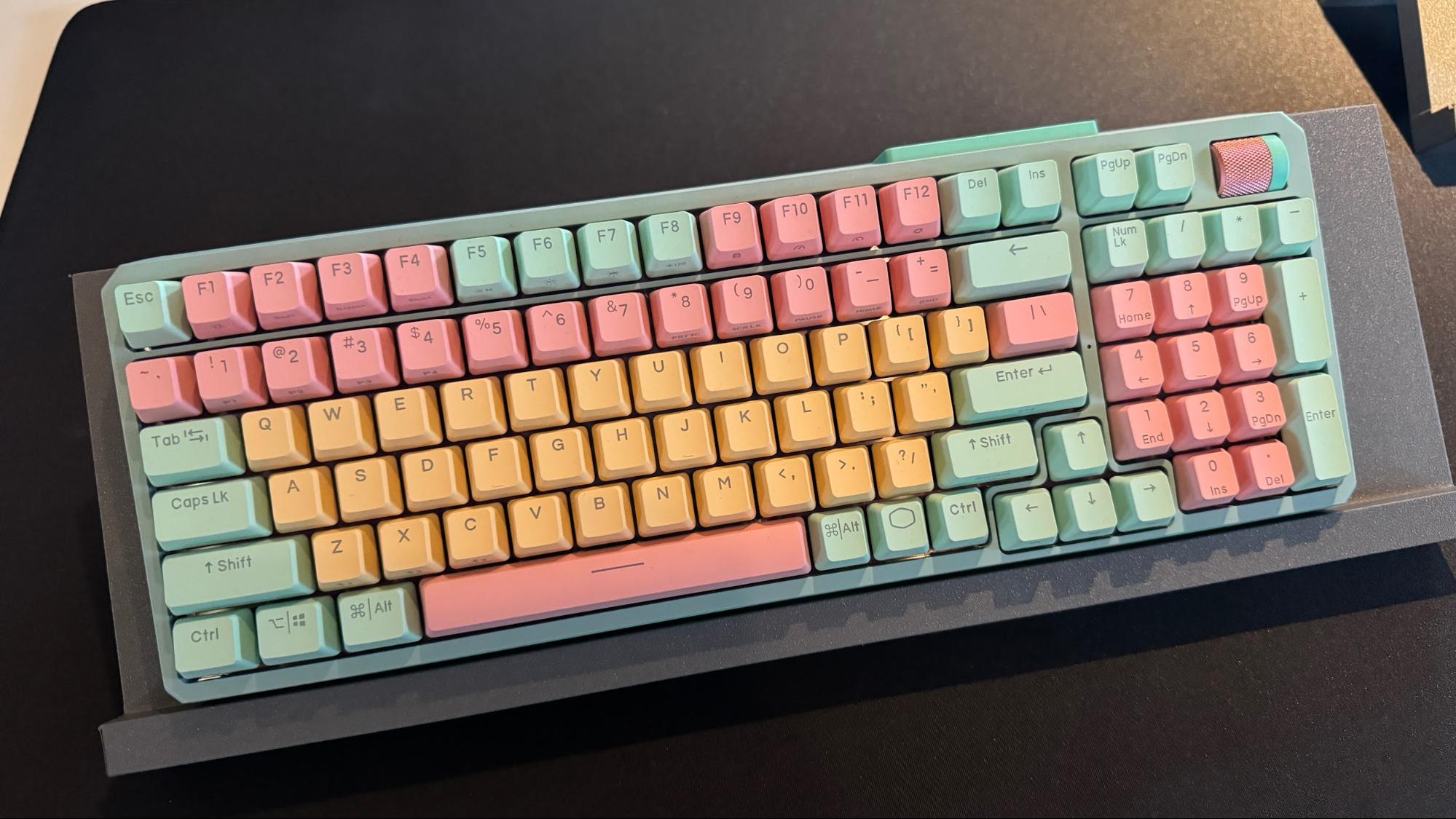
We've seen a lot of keyboards at CES 2024, and we actually saw this keyboard — or, well, the prototype of it — at CES 2023. But while we've seen a lot of gaming companies making keyboards to appeal to both gamers and keyboard enthusiasts, we haven't seen a lot of them also taking budget into account. Cooler Master's MK770 has all the premium features we've been looking for — gasket-mounted, hot-swappable, wireless with tri-mode connectivity, double-shot PBT keycaps, and more than one colorway — and it's set to cost just $119 when it launches this year.
The MK770 is also a 96-percent keyboard, meaning it's practically full-sized (minus some navigation keys) while still being relatively compact (or, well, as compact as you can get without sacrificing your number pad). It features a solid-feeling chassis with two sets of flip-out feet on the bottom — and cleverly-placed dongle storage under one of the flip-out feet, and has a programmable clickable volume knob. It's not the most feature-rich keyboard, but it's got everything you need for wireless gaming and it's hot-swappable.
—Sarah Jacobsson Purewal
Best Innovation: MSI MEG 321URX QD-OLED
Bigger, faster, more colorful. Those are three aspects that we typically track when new monitors are announced. For example, ASRock is making waves with its new 27-inch 520Hz gaming monitor, and vibrant OLED monitors are becoming more commonplace. But what if a company could make a monitor smarter? That's not something we'd thought about until now, with the introduction of the MSI MEG 321URX QD-OLED and its onboard AI acceleratoOne feature of the AI hardware, dubbed SkySight, can automatically pinpoint and mark enemies on the screen in games like League of Legends. Instantly knowing what direction your enemies are coming from is a definite perk, even if you could do the tracking with your own eyes.
All the AI processing is performed onboard the monitor and is undetectable since there is no intervention from your operating system or other installed software. We could see this being frowned upon by competitive gamers as an unfair advantage, but the underlying technology that frames SkySight is intriguing.
The MEG 321URX even features what MSI calls a Spectrum Bar (basically, a thin RGB strip) that sits below the display. Once again, using League of Legends as an example, the Spectrum Bar can light up to mirror your character's current health status. Even though League of Legends was the primary focus of MSI's CES demos, the company plans to release software for training to detect on-screen items for just about any game. It would be cool to see the Spectrum Bar used to mimic shift lights that you would see on a steering wheel on an F1 driver's steering wheel in games like EA's F1 23.
Looking past the AI intrigue, the MEG 321URX's specs sheet is impressive in its own right, with a 32-inch 4K QD-OLED panel. The monitor can even achieve 240Hz at that native resolution with a 0.03ms response time. It also features a USB-C port with 90-watt power delivery, HDMI 2.1, and DisplayPort 1.4 support.
Keep an eye out for the MSI MEG 321URX QD-OLED when it debuts this spring.
Read more: MSI's AI-powered gaming monitor helps you cheat at 'League of Legends,' looks great doing it
—Brandon Hill
Best 3D Printer: Creality K1C
Creality’s flagship K1 printer was already excellent, providing high-quality output at speeds as high as 600 mm/s. However, the K1 isn’t perfect and there are a few things that Creality fans had wanted from it, including the ability to sustain higher temperatures and work with more exotic filaments.
Enter the Creality K1C, which takes everything we like about the K1 and builds upon it. The new printer features an all-metal hotend which allows it to operate at a steady 300 degrees and therefore work with carbon fiber (that’s what the C in K1C is for). The printer also has a revised bowden tube path, better build plate and other improvements we don’t know about yet (the company has not released full specs). One of the leading 3D printer companies has a new leading device.
Read more: Creality unveils new flagship K1C 3D printer and latest Ender 3 V3 model
—Avram Piltch
Best SSD: Phison PCIe 5.0 powered drives and controllers
Phison previewed its E26 Max14um firmware prior to CES, and we saw multiple drives that should soon hit retail with performance of up to 14 GB/s. The key to enablement of the Micron 2400 MT/s NAND involved firmware updates and tuning to keep the controller within the PCIe M.2 power limit. Which brings us to the second part of this award.
The Phison E26 controller has been powering the fastest PCIe 5.0 drives of the past year, but more innovation is set to arrive with the next generation E31 controller that will launch later this year. E26 is manufactured on TSMC's 12nm process, and the E31 will move to TSMC 7nm (N7). This should help 'mainstream' PCIe 5.0 drives get to market, with lower price points, lower power use, and still high performance. Technically, the E31 will be slightly slower than the E26 Max14um, but E31 may actually end up in laptops as well. At this point, the combination of NAND and E26 Max14um effectively maxes out what we can expect to see from PCIe 5.0 drives — we'll need PCIe 6.0 to get significantly faster.
Put another way, Phison is moving the entire high-performance consumer SSD market forward. Without Phison, we'd still be stuck with PCIe 4.0 drives for at least a few more months. We've had PCIe 5.0 M.2 slots on Z690 motherboards since 2021 and had to wait two years to get SSDs that would make use of the technology, and we have Phison to thank for that. It doesn't look like that will change much in 2024 either.
Read More: Phison reveals specs for new PCIe 5.0 SSDs
—Jarred Walton
Best Motherboard: ASRock Phantom Gaming B760I Lightning Wi-Fi
ASRock already owns most of the slots on our Best Motherboards page for current-gen chipsets, because the company has recently been delivering solid feature sets at comparatively low prices, while the rest of the industry seems content to churn out ever-more-expensive boards for the kinds of builders who still have $1,000 or more left over after buying the shiny new RTX 4080 Super.
And the new Phantom Gaming B760I Lightning Wi-Fi, at just $200, looks to continue that trend for those looking to build a compact but powerful Mini-ITX with up to an Intel 14900K, thanks to 14+1+1 power phase setup, adorned with some chunky heatsinks.
The dual-DIMM setup that’s typical of ITX boards should also make for top-speed RAM support. The only limiting factor here is that the board seems to only have a single PCIe 4.0 M.2 slot, although there could be another hiding on the back of the board. We hope to get this board in soon and run it through our benchmark suite. If it performs as expected, this will likely be an appealing motherboard for many gamers looking to build a powerful compact rig while spending most of their build budget on things like the GPU and CPU.
Read More: ASRock's $200 Mini-ITX motherboard to support Intel Core i9-14900K
—Matt Safford
Tom's Hardware is the leading destination for hardcore computer enthusiasts. We cover everything from processors to 3D printers, single-board computers, SSDs and high-end gaming rigs, empowering readers to make the most of the tech they love, keep up on the latest developments and buy the right gear. Our staff has more than 100 years of combined experience covering news, solving tech problems and reviewing components and systems.
-
husker Very cool list with one exception: That keyboard. I mean.... those colors... What??? It's kinda pathetic when kudos have to include, "It has all the keys!". Well, bully for them; owners can type 'This is butt ugly' and not have to substitute keys with 'This is bvtt vgly'.Reply -
eichwana YESSS new MMO7! I had the old one and it was easily the best mouse I've ever had. When they were discontinued and mine eventualy died, I was heartbroken.Reply
This mouse is great for smaller hands, and great if you want loads of buttons without having to uses that horrible grid. -
bigdragon I do like the layout of that MK770 keyboard. It appears to have all the important keys while minimizing width. One of the problems I have with my current desk layout is fitting a keyboard, drawing tablet, and mouse. I'm always having to shift things around when switching between tablet and mouse. Less keyboard width should make space for all 3 comfortably. The question is... will the MK770 come in a non-ugly color scheme?Reply -
digitalgriffin While AMDs 8000 APU series is nice, it was a bit of a letdown overall. There were no new upgraded or price cut mid-high tier GPUs. (7600XT is a joke price wise) No regular 8000 series CPUs either. (Which typically run a lot faster than their APU counterparts)Reply
The Nvidia super series is a nice move in the right direction. But we are 10 months out before Blackwell and NVIDIA is still $-$- over on price compared to previous gen. 80 series should be no more than $750. 70 series $450 and 60 series $250.
Low end GPUs are still abysmal in price : performance ($/frame) on both sides compared to previous gen.
Yawn fest. -
oofdragon 7900XT averages 20% more FPS than 4070TI and it's a 20GB VRAM card vs 12GB from the TI/70S. Editors here won't change the bia$ ever, truth must be told. There's always that paid actor trying to convince people ray tracing and fake frames actually matters smhReply -
Tom Sunday Reply
My Snapshot: Nice review and break in Las Vegas and away from the doldrums of the office and WFH! A in-between delight and buffet heaven. I thought that the CES event was not really moving the ball forward…but as clearly indicated all about improved and better designed existing products.digitalgriffin said:While AMDs 8000 APU series is nice, it was a bit of a letdown overall. The Nvidia super series is a nice move in the right direction. Low end GPUs are still abysmal in price : performance ($/frame) on both sides compared to previous gen.
Displays: I believe that 27-inch monitors for enthusiasts and or for serious gamers are on the way out. And that a sweet-spot time for 4K able and 34”-42” inch monitors has arrived. Originally many used to replace their monitor every 5-years or so and which by now has dropped down to 3-years and with 1080p no longer being on the most wanted list. More real estate and immersion being the name of the game! Bethesda or Microsoft please take note! The same has also held true for replacing one's enclosure in a much shorter time frame, as constant ‘in the face eye-candy’ is what people really want and what counts for them! Perhaps a better looking and much improved airflow case will cancel-out the purchase of a replacement AIO?
CPU/APUs: On the Ryzen 8000G, I thought that the later 2024 INTEL wave will put many on standby or into a look-see stance to assess Arrow Lake and its new socket performance and before reaching into their pockets and to fully committing themselves? Performance and longevity being on the table!
Laptops: As clearly stated the 18-inch Asus Strix Scar is a last minute refresh or ditch effort and just before the curtain falls. Who would toss out $4,200 plus (including taxes) at this late generational stage in time for any laptop?
NVIDIA: The super series intro was a nice move. More of a super marketing ploy to attract and grab an increased slice towards the affordable buyer’s world. Possibly now in our ongoing inflationary times consisting of about 80% plus of the enthusiast market share? I now wonder what it will do for the already purchased RTX4090s…their longevity and value and their inevitable and in short order to arrive innovation for the 'halo' must-haves? -
Tom Sunday From what I can see none of the newest heavy-weight champion gaming laptops at CES sported any groundbreaking tech. As such and in the big picture laptops like these will always stand in a much compromised position when pitted against a qualified desktop system. In my view all current notebooks (like the 18-inch Asus Strix Scar) that are proffered to be suitable for gaming will thus remain an oxymoron! The big problem of effectively 'cooling a gaming laptop' will probably never go away nor be solved as ‘enclosure cooling’ needs real space and which these Halo laptops today simply cannot provide. Some OEM execs talked about how the incoming airflow, using an advanced vapor-chamber design, will astoundingly create a pressure zone that dissipates heat directly through the rear vents! But for me all of this is strictly just marketing talk and of no real life consequence. Even if the cooling issue could be solved someday and I would be gifted with such an absolute beast of a behemoth laptop, it would stay at home with me on a solid ventilated surface and permanently attached to a 34-inch OLED monitor. Certaintly not in my lap or balancing it on a airplane tray table!Reply
